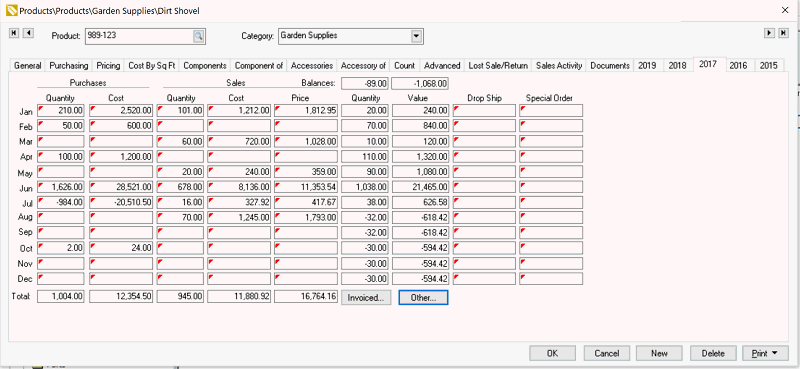- EBMS Knowledge Base
- Financials
- Chart of Accounts
-
Client Resources
-
EBMS Main Documentation
-
Sales
- Customers
- Proposals
- Proposal Sets and Templates
- Sales Orders
- Sales Invoices
- Materials Lists
- Sales and Use Tax
- TaxJar
- Recurring Billing
- Customer Credits
- Customer Payments
- Card Processing and Koble Payments
- Gift Cards and Loyalty Cards
- Verifone Gateway and Point Devices
- Freight and Shipping
- General Ledger Transactions for Sales
- Point of Sale and XPress POS
- Point of Sale Hardware
- Salesperson Commissions
-
Inventory
- Product Catalog
- Using Product Codes for No Count Items
- Product Pricing
- Special Pricing
- Tracking Inventory Counts
- Unit of Measure (UOM)
- Purchasing Stock
- Special Orders and Drop Shipped Items
- Receiving Product
- Barcodes and Inventory Scanners
- Components, Accessories, and Bill of Materials
- Component Formula Tool
- Made to Order Kitting (MTO)
- Configure to Order Kitting (CTO)
- Multiple Locations: Warehouses, Divisions, Departments
- Sync Product Catalogs between Companies
- Vendor Catalogs
- Serialized Items
- Lots
- Product Attributes
-
Expenses
-
Labor
-
Financials
-
Tasks and Work Orders
-
Job Costing
-
Manufacturing
-
Rental
-
Apps
-
E-commerce
-
EBMS Automotive
-
EBMS Horticulture
-
EBMS Metal Supply
-
EBMS Fuel Sales
Find the Source Documents Using the Financial Audit Trail
How many times has a value on a financial report created questions? How difficult is it to quickly identify the detailed transactions behind the total? One of the greatest strengths of the EBMS software is the ability to quickly validate financial totals, totals within a customer or vendor record, deduction or tax totals, or many other values within the software. The audit feature is one of the reasons that EBMS is a true management software.
For example, the yearly history tabs within each inventory item record are summaries of the financial transactions created whenever that specific item is purchased, sold, or manufactured (as shown below):

These summary values are a subsidiary ledger of the inventory asset value. The Cost column shows the debit transactions when the item is purchased or manufactured, and the Sales column displays the credit transactions. The Value column is the balance of the inventory asset account. A total of all the inventory items that are classified as Track Count, or some other perpetual classification, will equal the total of the inventory asset accounts.
Open one of the following accounts:
- Inventory item as shown above: Review the Inventory History section within the inventory documentation for more details.
-
Customer record: Review the Customer History section in the sales documentation.
-
Vendor record: Review the Vendor History section in the financials documentation.
-
Worker or employee record: Review the Worker History section in the labor documentation.
-
Taxes: Review the Review Sales Tax History section in the sales documentation or the Viewing Tax and Deduction History section in the labor documentation.
Double click on any of the values on the tab with the small red marking to view the financial transactions that total to the value displayed as shown below:

Select any transaction and click on the Source button to view the source document. Sometimes a second dialog will open with a subset of transactions. This powerful audit trail tool is useful to validate any financial transaction.
Note the Source button on many screens that allow the user to access the source transactions or document.
